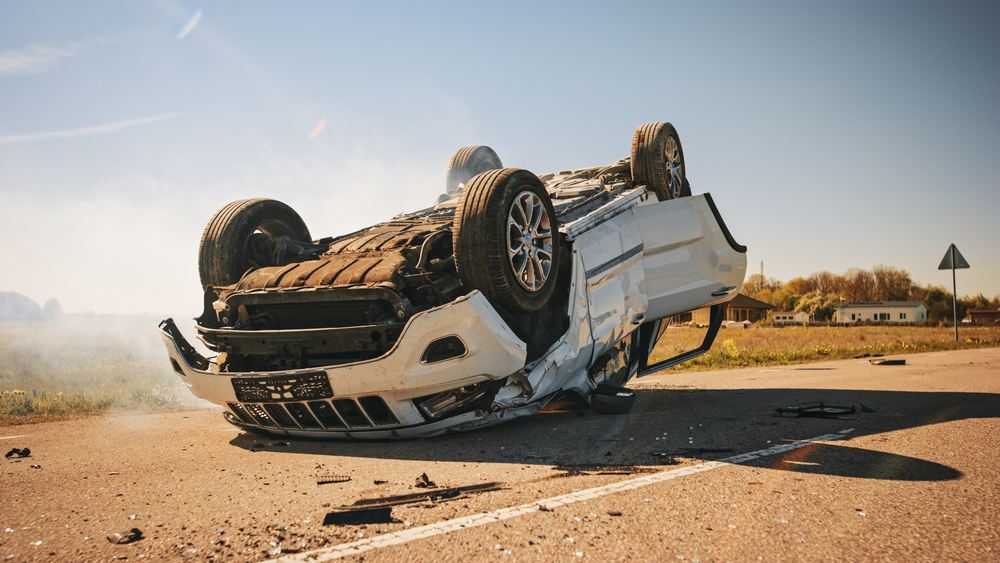There are over two hundred million registered drivers in the United States, and as a population, Americans spend over seventy billion hours a year driving. There is double the number of motorcycles on the road now compared to twenty years ago. Statistically, it makes sense that accidents happen – the more time you spend on the road, the more risks you are taking as a driver. In 2019 alone, there were almost seven million crashes involving motor vehicles reported by police, and two million of the people involved in these suffered car accident injuries. Nearly forty thousand died.
And driving is getting deadlier. The National Safety Council determined that the percentage of roadway deaths in 2020 was the highest it had been in 96 years, and that number is rising.
Risk Factors for Car Accident Deaths
What is your chance of dying in a car accident? It depends on a few factors.
Experience Level and Age
It seems obvious, but it is also very true: the less time that has passed since you first sat behind the wheel, the more likely you are to get into a fatal car accident. This is one reason why it is so expensive to insure young drivers – usually, teens and young adults have not had as much practice driving as the older people in their households. In fact, teens make up 7% of all motor vehicle deaths, with the odds of dying in a car accident being almost four times more likely for teens compared to adults aged twenty or older.
Younger teens are significantly more at risk of dying in a car crash than even those at the tail end of adolescence. Newly licensed teens aged fifteen and sixteen are one and a half times more likely to die in a fatal car accident than teens aged eighteen and nineteen.
Older adult drivers are also at risk. Every day, about twenty elderly adults aged sixty-five or older die in a fatal car accident. These adults are facing much higher odds of dying in a car crash than younger adults in middle age.
Gender
Across all age categories, male drivers are significantly more likely to be killed while driving a motor vehicle than female drivers. This has been true every year since 1975. Car crashes involving boys and men are also much more likely to be severe, with more people per crash dying. However, this gender gap is narrowing as women become more likely to participate in risky driving practices.
Speeding and Other Risky Habits
Risky habits are a huge predictor of whether you will end up dying in a car accident. In 2019, car accidents involving speeding ended in nearly ten thousand deaths. When you speed, you are more likely to lose control should you come across any obstacle.
People involved in speeding-related car accidents are also more likely to be involved in other risky driving behaviors at the time of the car crash. Chief among these is failing to wear a seatbelt. Of all deaths from car accidents, nearly half involved people who were not properly wearing a seatbelt. Wearing a seatbelt can reduce your odds of surviving an otherwise fatal car accident by up to 60%.
This is another area in which age matters. Studies have found that teens and young adults make up the population with the least seatbelt use in the United States. In 2019, it was discovered that 41% of high schoolers admitted to not always wearing a seatbelt when in the passenger seat of a car.
Timing
Depending on the season – especially with regards to Daylight Savings Time – the time of day or day of the week can have an impact on your odds of dying in a car crash. Car accidents are much more likely to happen during the weekend than during the workweek. Summertime is the season with the most car accidents (perhaps related to the increase of teenagers driving during the day while they are out for school). The peak time for crashes ending in death is between four PM and eight PM.
Type of Vehicle
Every year, the Insurance Institute for Highway Safety (IIHS) releases a list of the safest vehicles. The criteria includes crash prevention, headlight safety, and other factors. In general, large, heavy vehicles are significantly safer than smaller, lighter vehicles, especially as the number of large vehicles on the highway at any given time increases. In general, sports utility vehicles are the car of choice for safety-conscious families, but even smaller cars can be safe as long as the driver engages in safe driving practices. Airbag injuries can also cause death in an accident.
Substance Usage
Drivers are considered to be under the influence when their blood alcohol content reaches .08 grams per deciliter. Many people do not realize that this is not actually very much alcohol! Just two small glasses of wine – enough to push you past buzzed – is enough to be considered legally impaired. That being said, even just a buzz inhibits your reflexes and makes you a more dangerous driver.
Avoid Dying from a Car Crash
It is important to take precautions to avoid fatal car accidents. The easiest way to do this is to always wear your seatbelt and to wear it properly. Those who are pregnant or who carry their weight in their stomachs should make sure to tuck the lap belt under their belly against the more protective pelvic bone instead of placing it across where, under force, it could dig into the soft tissue there and into necessary organs.
Some other tips include:
Never drive after consuming alcoholic beverages, even if you think you’re just a little buzzed. Even pedestrians are more at risk of dying from a collision when they are out at night after drinking.
- Consider taking a defensive driving course, especially if you are newly licensed.
- Monitor your teenagers’ access to cars closely and ensure that they are using safe driving behaviors.
- Avoid risky behaviors such as speeding or running red lights. Laws prevent people from being killed in fatal car crashes.
Reference
https://driving-tests.org/driving-statistics/
https://www.nsc.org/newsroom/motor-vehicle-deaths-2020-estimated-to-be-highest
https://www.iihs.org/topics/teenagers
https://www.cdc.gov/transportationsafety/older_adult_drivers/index.html
https://www.iihs.org/topics/fatality-statistics/detail/males-and-females#trends
https://www.nhtsa.gov/risky-driving/seat-belts
https://www.iihs.org/ratings/top-safety-picks#overview
https://www.cdc.gov/transportationsafety/teen_drivers/teendrivers_factsheet.html
https://crashstats.nhtsa.dot.gov/Api/Public/ViewPublication/811606
https://injuryfacts.nsc.org/motor-vehicle/overview/crashes-by-time-of-day-and-day-of-week





